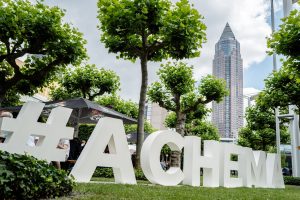Baker Hughes and NOVATEK Partner to Develop Pioneering Lower Carbon Hydrogen Solution for LNG Trains
The two companies will cooperate on the development and implementation of innovative compression and power generation technology solutions from Baker Hughes for NOVATEK’s LNG projects, supporting NOVATEK's emissions reduction, raising efficiency and supporting long-term sustainability.
The agreement will begin with a pilot program to introduce hydrogen blends into the main process for natural gas liquefaction to reduce carbon dioxide emissions from LNG facilities, including NOVATEK’s Yamal LNG complex. Baker Hughes will provide world-class engineering and turbomachinery equipment to convert existing natural gas liquefaction trains at Yamal LNG to run on hydrogen blends rather than solely run with methane from feed gas.
“Baker Hughes is one of the main equipment suppliers to our Yamal LNG and Arctic LNG 2 projects,” said Leonid Mikhelson, NOVATEK’s Chairman of the Management Board. “We are expanding our cooperation with them to develop efficient and economically viable solutions to mitigate the impact of climate change on our projects – one of the essential topics for NOVATEK and the entire oil and gas industry. Hydrogen technologies have great prospects to reduce the level of global greenhouse gas emissions, and further work is required to develop and adapt these technologies for operations in Arctic climatic conditions.”
“We are working with NOVATEK to introduce the first solution for decarbonizing the core of the LNG production – the turbines driving the liquefaction process,” said Lorenzo Simonelli, Chairman and CEO, Baker Hughes. “The combination of our world-class expertise in LNG engineering and deep experience with hydrogen compression technology positions us to further lead in reducing emissions from LNG operations and further support the energy transition.”
NOVATEK is Russia’s largest independent natural gas producer, producing more than 77 billion cubic meters per year (bcm/yr) with about 9 bcm/yr of LNG sold in international markets. The three-train Yamal LNG project, located on the Siberian Arctic coast, shipped its first LNG cargo in 2017 and reached full capacity under its current design in 2018. Its liquefaction trains currently employ the Frame 7/1EA single-shaft gas turbine provided for this project by Baker Hughes, which can be retrofitted to operate with hydrogen blends and is a preferred turbine for LNG plants globally. Hydrogen blends present significant opportunities for the natural gas sector to cut emissions for LNG turbomachinery equipment, the main mechanical driver of the liquefaction process.
Baker Hughes has a long history of collaboration with NOVATEK. Baker Hughes is supplying LM9000 aeroderivative gas turbines for NOVATEK’s Arctic LNG 2 project and completed the First Engine to Test (FETT) milestone in mid-2020 followed subsequently by all three string tests for power generation and mechanical drive in Q4 2020. The LM9000 is the world’s most efficient simple cycle aeroderivative gas turbine with best-in-class availability, efficiency and lowest NOx emissions, making it ideal for LNG operators to reduce their total cost of ownership and overall carbon footprint.
Source: Baker Hughes, a GE comany LLC







